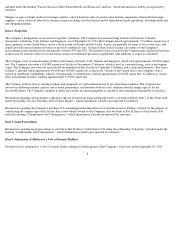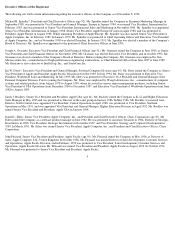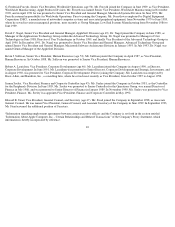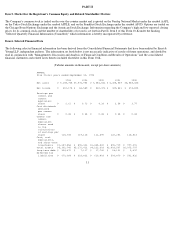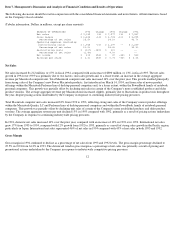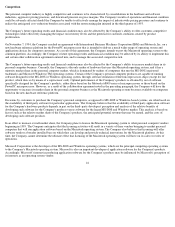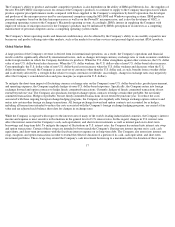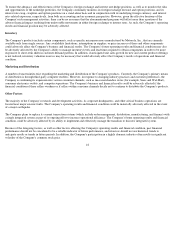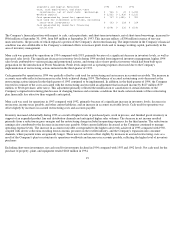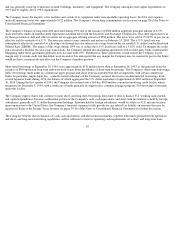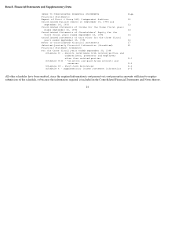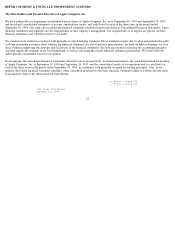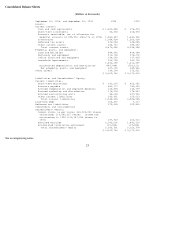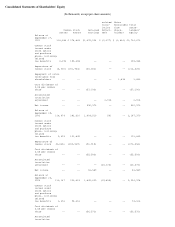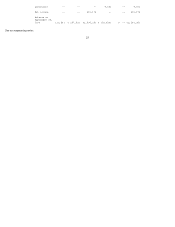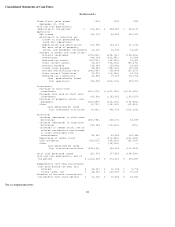Apple 1994 Annual Report Download - page 19
Download and view the complete annual report
Please find page 19 of the 1994 Apple annual report below. You can navigate through the pages in the report by either clicking on the pages listed below, or by using the keyword search tool below to find specific information within the annual report.The Company's ability to produce and market competitive products is also dependent on the ability of IBM and Motorola, Inc., the suppliers of
the new PowerPC RISC microprocessor for certain of the Company's products, to continue to supply to the Company microprocessors which
produce superior price/performance results compared with those supplied to the Company's competitors by Intel Corporation, the developer
and producer of the microprocessors used by most personal computers using the MS-DOS and Windows operating systems. IBM produces
personal computers based on the Intel microprocessors as well as on the PowerPC microprocessor, and is also the developer of OS/2, a
competing operating system to the Company's Macintosh operating system. Accordingly, IBM's interest in supplying the Company with
improved versions of microprocessors for the Company's products may be influenced by IBM's perception of its interests as a competing
manufacturer of personal computers and as a competing operating system vendor.
The Company's future operating results and financial condition may also be affected by the Company's ability to successfully expand its new
businesses and product offerings into other markets, such as the markets for on-line services and personal digital assistant (PDA) products.
Global Market Risks
A large portion of the Company's revenue is derived from its international operations. As a result, the Company's operations and financial
results could be significantly affected by international factors, such as changes in foreign currency exchange rates or weak economic conditions
in the foreign markets in which the Company distributes its products. When the U.S. dollar strengthens against other currencies, the U.S. dollar
value of non-U.S. dollar-based sales decreases. When the U.S. dollar weakens, the U.S. dollar value of non-U.S. dollar-based sales increases.
Correspondingly, the U.S. dollar value of non-U.S. dollar-based costs increases when the U.S. dollar weakens and decreases when the U.S.
dollar strengthens. Overall, the Company is a net receiver of currencies other than the U.S. dollar and, as such, benefits from a weaker dollar
and is adversely affected by a stronger dollar relative to major currencies worldwide. Accordingly, changes in exchange rates may negatively
affect the Company's consolidated sales and gross margins (as expressed in U.S. dollars).
To mitigate the short-term impact of fluctuating currency exchange rates on the Company's non-U.S. dollar-based sales, product procurement,
and operating expenses, the Company regularly hedges its non-U.S. dollar-based exposures. Specifically, the Company enters into foreign
exchange forward and option contracts to hedge firmly committed transactions. Currently, hedges of firmly committed transactions do not
extend beyond one year. The Company also purchases foreign exchange option contracts to hedge certain other probable, but not firmly
committed transactions. Hedges of probable, but not firmly committed transactions do not extend beyond one year. To reduce the costs
associated with these ongoing foreign exchange hedging programs, the Company also regularly sells foreign exchange option contracts and
enters into certain other foreign exchange transactions. All foreign exchange forward and option contracts not accounted for as hedges,
including all transactions intended to reduce the costs associated with the Company's foreign exchange hedging programs, are carried at fair
value and are adjusted each balance sheet date for changes in exchange rates.
While the Company is exposed with respect to the interest rates of many of the world's leading industrialized countries, the Company's interest
income and expense is most sensitive to fluctuations in the general level of U.S. interest rates. In this regard, changes in U.S. interest rates
affect the interest earned on the Company's cash, cash equivalents, and short-term investments as well as interest paid on its short-term
borrowings and long-term debt. To mitigate the impact of fluctuations in U.S. interest rates, the Company has entered into interest rate swap
and option transactions. Certain of these swaps are intended to better match the Company's floating-rate interest income on its cash, cash
equivalents, and short-term investments with the fixed-rate interest expense on its long-term debt. The Company also enters into interest rate
swap, swaption, and option transactions in order to extend the effective duration of a portion of its cash, cash equivalent, and short-term
investment portfolios. These swaps may extend the Company's cash investment horizon up to a maximum effective duration of three years.
17



